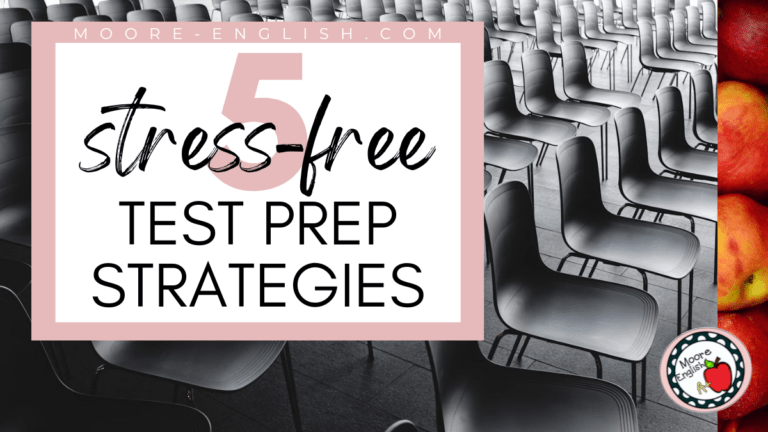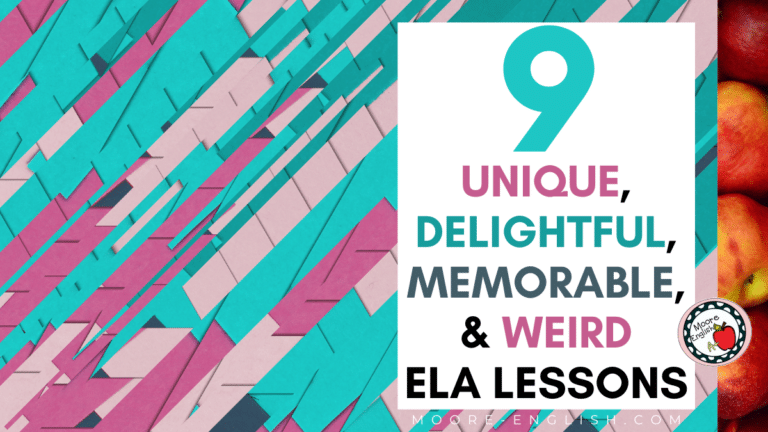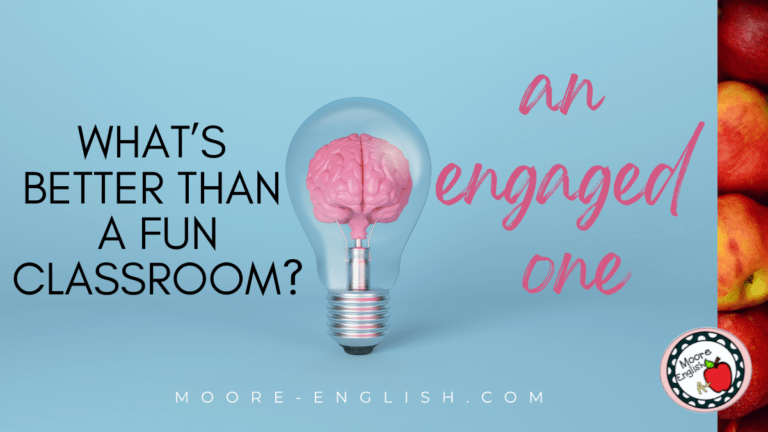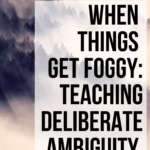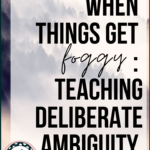For several years, the second unit in my junior English class has been the American Enlightenment. When dealing with this unit, teachers could easily reduce our Puritan forefathers to the fire-and-brimstone of Jonathan Edwards’ famed “Sinners in the Hands of an Angry God,” but that approach would skew students’ perception of early American literature. For this reason, I like to pair Jonathan Edwards’ work with Edward Taylor’s “The Ebb and Flow,” a poem about the speaker’s spiritual struggles. The reflective nature of the poem is a nice counterpoint to the fervor of the sermon.
During our study of these two works, students often struggle with a few elements. First, why must the authors have such similar names? Sigh. Then, students struggle with tone, which I address through close reading. Finally, students struggle with the poem’s ambiguity. Does the speaker’s relationship with God remain positive? Or does the speaker lapse back into doubt? Who is in control of the speaker’s relationship with God? Since I know my students struggle with deliberate ambiguity, I’ve put together some strategies and titles to help your students also work with this difficult concept.

This post this post may contain affiliate links. Please read the Terms of Use.
Prime the Pump
Before diving into a text like “The Ebb and Flow” where ambiguity reigns supreme, choose a text that ends with resolution but not closure. For example, The Great Gatsby provides resolution but does not give readers a great sense of closure. During our close reading of The Great Gatsby’s famed conclusion, I introduce the concept of deliberate ambiguity. Introducing the concept early allows students to sit with the idea for a while. We discuss Fitzgerald’s choices in the conclusion. Maybe I’ll do an exit ticket, but we’re not ready for a summative assessment yet.
Don’t Be Ambiguous
When you introduce the concept of deliberate ambiguity (whether with Gatsby or with a different title), be direct. While the concept you are teaching may deal with an author’s use of ambiguity, your instruction of the concept should be clear. This is a time for direct instruction. I write the term on the board and ask students to define both parts of the term “deliberate” and “ambiguity.” Then, I provide them with a definition of the entire term and point to some examples of deliberate ambiguity. For example, the last scenes of Inception leave viewers wondering if everything has been a dream. In terms of television, shows that end with cliffhangers provide viewers with a lack of resolution. (The series finale of Buffy and Angel are the first titles that come to mind.)
Usually, I offer my students one or two examples of movies or shows that end with deliberate ambiguity, and then I ask them to think-pair-share more examples. More often than not, they come up with better and more relevant examples than I ever could.
Spiral, Spiral, Spiral
As with most new ideas, students have the most success with deliberate ambiguity when they work with it regularly. Not every text you read has to be ambiguous, but even the absence of ambiguity (which would be clarity) is an authorial choice worthy of discussion. (To Kill a Mockingbird is a good example of a text that lacks ambiguity.) Any time you work with ambiguity in your instruction, you are helping students work toward CCSS.ELA.RL.11-12.1, which asks students to make inferences about where a text leaves matters unresolved.
As your semester or year progresses, occasionally return to the idea of deliberate ambiguity. This kind of recursive, spiral instruction and review will help students connect this idea to several other ideas. Ultimately, they will take the concept and make it a regular part of their literary lexicon, as familiar as “simile” and “metaphor.”
Throughout the year, introduce students to some of ambiguity’s frequent companions. In particular, rhetorical questions and ambiguity often go hand-in-hand. Similarly, the color symbolism for ambiguity is often different than the color imagery related to greed, hope, or fear. As you might expect, gray is often the color of the ambiguous, and a common symbolic representation is fog. Additionally, as with most poetry, directing students toward meaningful punctuation can help them confirm and discuss ambiguity.
Title Suggestions
Novels and Dramas: Apart from The Great Gatsby, other novels that include deliberate ambiguity include Things Fall Apart, Julius Caesar, Romeo and Juliet and The Crucible. Interestingly, all of those titles end with death. And, apart from the American literature, they all end with a suicide. For both moral and deliberate ambiguity, consider Heart of Darkness.
Poems: Here are some other poetry titles to consider.
- “The Death of the Ball Turret Gunner” by Randall Jarrell (is the gunner heroic?)
- “The Second Coming” by William Butler Yeats (what happens when the beast arrives?)
- “For the Consideration of Poets” by Haki R. Madhubuti (two rhetorical questions!)
- “The Summer Day” by Mary Oliver (that final question!)
- “You Could Never Take a Car to Greenland,” by Maggie Smith (so many questions)
- “Respiration” by Jamaal May (questions galore)
- “I heard a Fly buzz-when I died-“ by Emily Dickinson (included in this introduction to Dickinson’s style)
- “I dwell in Possibility–” and “Before I got my eye put out–” by Emily Dickinson (both ending with that dash–)
Short Stories: When considering short works, some titles to consider include:
- “Winter Dreams” by F. Scott Fitzgerald
- “Shooting an Elephant,” by George Orwell
- “A Worn Path” by Eudora Welty
- “The Jilting of Granny Weatherall” by Katherine Anne Porter
- “A New England Nun” by Mary E. Freeman
What titles should we add to our list? How do you teach deliberate ambiguity? Let us know below?



